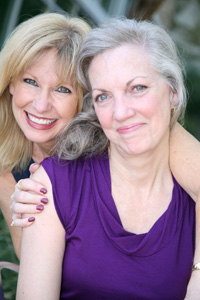Face

- Eyelid Lift (Blepharoplasty)
- Upper Eyelid Surgery
- Lower Eyelid Surgery
- Face Lift
- Brow Lift
- Nose Reshaping (Rhinoplasty)
- Ear Reshaping (Otoplasty)
Eyelid Lift (Blepharoplasty)
As you age, eyelid’s skin stretches and the muscles supporting them weaken, causing lids to sag. Blepharoplasty repairs drooping eyelids by removing excess skin, muscle and fat. Upper and lower lids can be operated on together or separately; your consultant will advise the most suitable procedure for you. Surgery typically lasts from one to two hours and may be carried out as a day procedure.
Upper Eyelid Surgery
Creating a small incision in the natural crease line that occurs 1cm above the eyelashes, your surgeon will separate the skin from the underlying tissue, trimming excess fat and sagging muscle as needed. The incisions may extend into the crow's feet or laughter lines at the outer corners of the eyes. To close the incisions, the surgeon uses very fine sutures under the skin and Steri-Strips™ on the surface of the skin.
Lower Eyelid Surgery
The incision usually starts at the outer margin of the eyelashes. The fat pads below the muscle are usually reduced and the skin is then lifted upwards and outwards, gently tensioning the area and removing any overlapping skin. The incisions are closed with very fine sutures under the skin and Steri-Strips™ on the surface of the skin. This surgery is usually performed under general anaesthetic and may require an overnight hospital stay.
Face Lift
This involves tightening of the facial muscles, lifting the skin into a new position and removing the excess. Resulting scars will be hidden at the ears or in the hairline and usually fade over time. The procedure is performed in two to three hours under general anaesthetic, and usually requires a two day stay in hospital. Face lift procedures may be combined with other surgeries, such as blepharoplasty, and non-surgical procedures such as dermal fillers and laser skin-resurfacing
Brow Lift
In brow lift surgery, also known as a forehead or eyebrow lift, a full incision is made across the top of the scalp behind the hair line. Muscles are tightened while excess skin is removed, and forehead skin is elevated to lift the position of the eyebrows and eliminate horizontal wrinkles. The initial incision is then sutured closed. The result is a refreshed look with a smoother forehead, reduced frown lines and an elevated position of the eyebrow line. Typical recovery times are short and patients experience minimal discomfort. Alternatively, brow lifts can be performed endoscopically – a method which is less invasive than traditional surgery – further reducing scarring and recovery time.
Nose Reshaping (Rhinoplasty)
This is for individuals who have suffered trauma, sports injuries or those unhappy with the appearance of their nose. During the procedure, usually carried out under general anaesthetic, surgeons alter the size, shape and length of the nose and nostrils.
Patients with deviated septums or problems with nasal breathing may opt for septo-rhinoplasty to straighten the nose and improve air flow. Augmentation rhinoplasty is performed to build up the nose in the case of a flattened bridge or a weak nose tip.
Post-surgical scarring is usually entirely internal and therefore not visible. In the case of nostril reduction, some minimal external scarring will occur, but is well hidden in the nostril crease. Speak with your consultant to determine the most appropriate procedure for you.
Ear Reshaping (Otoplasty)
Performed to set prominent ears back closer to the head. Ear reshaping involves the reshaping and / or repositioning of the ears. During the procedure, surgeons sculpt and reshape the cartilage in the ear or develop a new pocket behind the ear to accommodate the repositioned ear. The ears are then stitched into the new position using cleverly concealed incision marks in the natural crease behind the ear. This surgery is usually completed in one-and-a-half to two hours under a general anaesthetic, or as a local anaesthetic procedure.
Otoplasty is fully covered by health insurance for children up to 17 years of age. At the time of consultation, be sure to ask your consultant or nurse about this.
